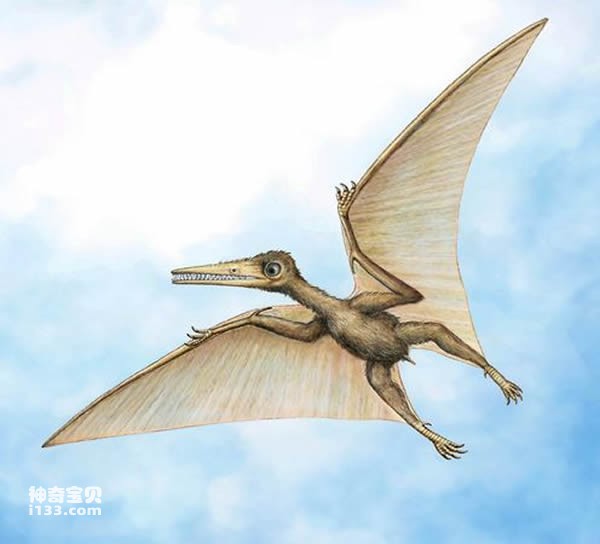Pterosauria is a unique group of Mesozoic flying reptiles. Early groups of Pterosauria underwent body structure changes, reorganization, adaptive radiation, and replacement, and finally evolved wings midway through their long history. Pterodactyloidea.
Pterodactyloidea is a highly specialized clade containing the largest flying creatures. The sudden appearance of this large set of morphological characters may be due to their origin in terrestrial environments. Although the fossil record of pterosaurs in terrestrial environments has been poor, many of its characteristics suggest that pterosaurs were adapted to these environments. However, little evidence has been available to test this hypothesis, and it is not supported by previous phylogenies or early pterosaur findings.

Restored picture of Kryptodrakon progenitor, gen.et sp.nov.
Brian Andres, James Clark and Xu Xing reported in the journal Current Biology that the earliest pterosaur fossils with elongated metacarpal bones were found at the Middle Jurassic-Upper Jurassic boundary in the continental northwest of China. According to this The characteristics were classified into the suborder Pterodactyl and named as the new genus and new species Kryptodrakon progenitor, gen.et sp.nov.
Phylogenetic analysis confirmed that this species is the most basal pterodactyl suborder, and marked the origin of the terrestrial environment of the pterodactyloid suborder and its mainly terrestrial history. Systematic comparisons of wing shape and environment have also revealed a significant correlation between modern flying vertebrates, suggesting support for reconstructions of pterodactyloids living in, or at least adapting to, their environment.

Fossils of Kryptodrakon progenitor, gen.et sp.nov.
animal tags: Pterosauria
We created this article in conjunction with AI technology, then made sure it was fact-checked and edited by a Animals Top editor.